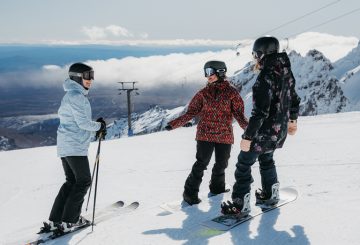キインギ・トゥヘイティア・ポートレイト・アワード展は、2023年5月に開催される予定です。イベントの主催者は、マオリの肖像画の幅を広げ、キンギタンガとワイタンギの関係を強化することを目指しています。
ワイタンギのテ・コンガフ美術館が主催する展覧会では、2023年のキーインギ・トゥヘイティア・ポートレート・アワードの最終選考に残った43人の作品が展示されます。この隔年開催の全国コンペティションでは、新進のマオリ芸術家たちに、トゥープナと呼ばれる先祖の肖像画の制作を奨励しています。
この賞と展覧会は、さまざまな視覚芸術媒体を用いる新進マオリのアーティストのスキルと才能を紹介する場となっています。キインギ・トゥヘイティア・ポートレート・アワードは2020年8月に初めて創設され、2021年に第1回コンペティションと授賞式が行われました。
ワイタンギ・トリティ・グラウンズのキュレーション&ラーニングの責任者であるシャネル・クラークは、巡回展の開催に興奮の声を上げました。特に今年初めに国王がワイタンギを訪れたことを受けて、この巡回展の開催に興奮の声が上がりました。
クラークは、この展覧会では多様なアートが展示されており、多くのアーティストがトゥープナの表現方法の限界に挑戦していると指摘した。AI で生成された作品など、デジタル要素を取り入れた作品もあります。伝統芸術と現代美術が融合したこの作品は、今日のマオリのアーティストが享受できる刺激的な可能性を物語っています。
クラークによると、マオリの肖像画は、ヨーロッパの理想にとらわれることなく、マオリのアーティストが選ぶどんな形でも構わないそうです。彼女は、表現の選択は完全にアーティスト次第だと強調しました。この展覧会には、粘土(ウク)や彫刻(ファカイロ)などの伝統的なマオリの芸術形式も含まれています。
キインギ・トゥヘイティア・ポートレート・アワードは新進アーティストを対象としており、その多くが2回目の参加となります。クラークは、この展覧会は、これらのアーティストが自分の足跡を残し、露出を得る貴重な機会を提供すると強調しました。
キインギ・トゥヘイティア・ポートレイト・アワード展は、2024年8月11日までワイタンギ・トリティ・グラウンドで一般公開されます。




























































